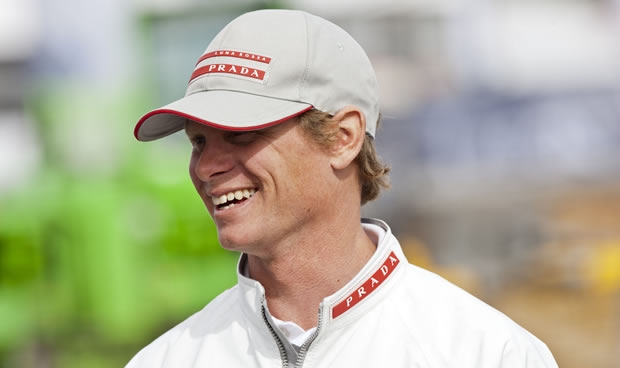
British AC72 helmsman
Chris Draper has ‘done well for himself’. Since bringing home the 49er bronze medal from Athens, Draper has continued his Olympic skiff campaign, while also turning his attentions to catamarans. On two hulls his record has been consistently good - he cleaned up in the 2009 Extreme Sailing Series as helmsman of The Wave, Muscat before being signed to skipper the Team Korea AC45 for the first America’s Cup World Series events in 2011. In this Draper and his largely British crew punched above their weight, regularly nipping at the heels of the bigger teams and as a result, at the end of 2011 he was chosen by Luna Rossa to trial as one of their AC helmsmen.
Also joining this race was double Extreme Sailing Series winner Paul Campbell-James, who steered the Luna Rossa X40 to victory in 2011. Then, last year, following a torrid Volvo Ocean Race and Olympic Games, Spain’s Iker Martinez also became a contender.
As Luna Rossa skipper Max Sirena mentioned in our interview with him, most of the trialling for the helmsman’s role took place in the team’s two AC45s and at the end of last year it was Draper who finally got the nod.
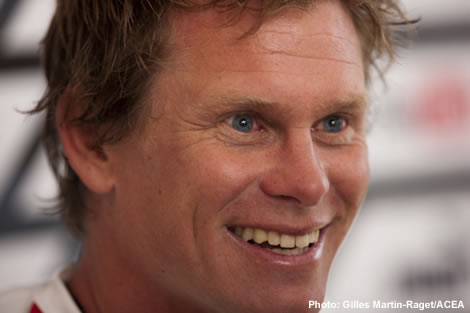
“Four or five years ago it wasn’t something I would have expected to have happened,” admits Draper. “I was expecting to be at the top of a rig or something like that. But the decisions I’ve made along the way, the stars have aligned nicely and I am very grateful for where I’ve ended up. I feel I have got here through doing well over the last 18 months when it has really counted. I feel very lucky to get to do it and I am looking forward to giving it everything I’ve got.”
This is obviously good news for British sailing too for while there might be no British challenge for the 34th America’s Cup, then at least there will be a British helmsman competing in San Francisco this summer. And dare we hope for two? If Ben Ainslie proves himself ‘the daddy’ over James Spithill during Oracle Team USA training, fellow knight of the realm Russell Coutts told us last year that it would be hard for them not to let Ainslie drive in the America’s Cup itself. In reality no one quite believes this will happen even if Ainslie does prove dominant during training. “It would be bloody good though!” agrees Draper. And then of course there are Iain Percy and Andrew Simpson who are both with Artemis Racing, Percy now holding the post of Sailing Team Director/tactician.
But it is Luna Rossa’s sailing team that includes the most Brits with, in addition to Draper and Paul C-J, luminaries such as Freddie Carr, Nick Hutton, Alister Richardson and the Rio 2016 Finn contender Giles Scott, who joined last autumn, alongside the otherwise mostly Italian crew. Exactly who will end up racing this summer of course remains up in the air.
The Italian team has been sailing their AC72 for several months now, so how did Draper find the step-up from the AC45? “Obviously the 45 was the biggest boat I’d steered until I got on the AC72. But the biggest change to be honest was that I’d never used a wheel before! And it is amazing how small the 72 feels now and how the 45 feels like a little toy. It is not hard to see how the likes of Jimmy [Spithill] were throwing the 45 around in San Fran. Once you’ve sailed this, the 45 feels very small, like a Hobie cat.”
Like most ultra-fast multihulls the sensation of speed on the AC72 comes not from the heel or things you’d normally register on a monohull, but from the gale-force apparent wind on the breeze. Downwind, despite the potential for 40+ knot speeds, the ride is often surprisingly sedate (especially now the boats are foil-borne). “We are obviously becoming fairly blasé about it,” admits Draper. “The biggest thing is when you are going upwind, because the apparent is so heavy, it feels like you are going warp speed upwind. Downwind it is a lot quieter and the boat is very silent when it is out of the water foiling. Certainly the feeling of speed is not quite so obvious.”
Much publicised is what a thorough work out the Cup catamarans provide the crew, however Draper acknowledges that the helmsman gets a comparatively easy ride. “I feel pretty guilty! I do hold the wing sheet every so often, but it is very similar to racing the 45.”
When Draper was announced as helmsman, Italian sailing’s favourite son, Francesco ‘Ceccho’ Bruno, was announced as tactician. This relationship seems to be working well - both he and Draper are ex-49er sailors. “The time that I spent with Ceccho on the 45s is proving invaluable as the more comfortable we get sailing with the boat, the more input I can give back to him,” Draper continues. “The last days that we were sailing the boat in good puff, we were a lot more able to communicate together and relay to the team what the tactical plan was, etc rather than just reacting, which tends to be what happens when you haven’t spent long enough time sailing the boat in certain conditions.”
Saying this, compared to his previous tactician roles, Bruni, like Ray Davies on Emirates Team New Zealand, is set to spend more time manning the pumps and dealing with other aspects of racing the boat. As a result, Draper acknowledges that there will be times when the helmsman will be on his own making decisions and others when Bruni will be integral.
Foiling
The big deal of course over the last months has been getting to grips with the foils. Fortunately Draper says that they did quite a lot of training and experimentation with these using the team’s SL33 catamaran in Sardinia, over six weeks either side of the America’s Cup World Series event in Newport last summer. This helped dispel doubts about their getting airborne. “We were a little bit unsure as were our designers, but in Sardinia we were foiling for long periods and started to realise it was going to be very viable. We gained a lot of foiling experience then, which has since proved invaluable - when we started in the AC72, the sensation of foiling was all very familiar and wasn’t an issue at all.”
Confidence increased in August when the Emirates Team New Zealand AC72 began foiling around the Hauraki Gulf and Draper says that two months later when they first launched the Italian AC72, they were foiling on their first day out. This was only in around 11 knots of breeze and “since then it has evolved a lot,” says Draper. “The original significant boat speed increase was between foiling and not foiling. Now you are seeing significant increases between foiling really well and just foiling.”
This comes down to refinements in the design of the foils combined with the techniques for how the foils are used, Draper maintains and he adds that it is on the straight lines where the big gains are to be made and this is where they have been focussing.
With the exception of Artemis Racing’s J-shaped boards, the majority of AC teams, including Luna Rossa, have been focusing on variations on the S-shaped and L-shaped boards, but the Italian team may end up some way from where they are at present. Draper confirms that they will only introduce the final iterations of their gear in the last run up to the Louis Vuitton Cup.
Cup team personnel get quite tight-lipped talking foils, but we preserve. Is there much to choose between the L- and S-foils? “They are not so different, they are similar sensations,” says Draper, picking his words. “Once the boat is up on the foil it is pretty much the same. Some foils are a little bit easier to use and some are a bit harder, so it is a case of weighing up the difficulty and consistency versus difficulty and slight lack of consistency and possible speed benefits. Without going into too much detail, some foils are easier to use and some are a bit harder, but possibly the harder ones are sometimes faster....”
So read that the S-foils are harder to use (ie they require more effort to raise/lower than the straighter L-foils) but are occasionally faster downwind...
The name of the game with designing the AC72s for the tight San Francisco race course is to find the right balance between speed and manoeuvrability and determining if performance has to be sacrificed in the name of faster boat handling. “It is going to be a tricky balance,” says Draper. “There will be a lot of tacks for sure. I think you could, for example, have a board that is very very fast downwind but is hard to move. If you have a tool that can achieve much higher speeds without there being a high tariff on work load then that will be a lot, lot faster - that is what we are trying to achieve.”
Foil development has been made a little easier thanks to catamarans having two hulls, allowing some very convenient two boat testing...in one boat. Several teams have been fitting different boards in each hull, comparing their performance tack to tack. “You can only build a certain number of boards due to the rules or time, so that does give you an opportunity to look at different things,” says Draper.
The sailing team continues to make quantum leaps, which Draper compares to the early days of the Moths foiling. “I remember when we were watching Rohan Veal gybing on his foils on his Bladerider and everyone being incredibly impressed, but now people are going out and learning how to gybe on their foils in two days. I think systems improve, foils improve and people’s expectations of what can be achieved rise and it moves very quickly. So it is about making sure we stay on top of that curve.”
So just how good are they going to get at foiling? As with the Moth, the amount of wind the boat needs to foil is sure to get less and less – but even with foils that develop massive lift, given the 6 tonne weight of the AC72, this will be more than the 5-6-7 knots required to get a Moth airborne.
At present they are not fully foiling upwind for example. “I think we will continue to see that, but maybe someone might manage to change that,” says Draper. “You are going to be a nosy downwind if you set up to foil upwind.” Like the early days of the Moth it will be interesting to see if anyone can gybe their AC72 without touching down.
With five months of sailing behind them, the Luna Rossa team is getting proficient with their AC72 and according to Draper confidence is gaining daily. However being a one boat campaign means they can’t throw the boat around with the same gusto as Emirates Team New Zealand has been. “The Kiwis have been pretty gung-ho,” says Draper. “They have been out in a good bit of breeze and are getting very confident in it. That is something we are lacking in a bit, but we plan to work hard on that when we get to San Francisco. We have been conscious that if we break it then we wouldn’t be able to sail and it could have implications on us being able to race in the Cup, so we have been more cautious.”
Although they have been out in more, Draper says the most wind Luna Rossa has been pushing hard in to date has been around 22-23 knots. The Kiwis say they’ve been pushing in 30, although Draper observes probably nothing has been lost in the telling... “but, yes, they have been out in some good breeze and have still been pushing reasonably hard. We have seen some little moments that they’ve had...but nothing major and I think they are showing that the boat and the design that we have is pretty reliable in good breeze. It has got a good bit of volume and it’s a sturdy package.” Touch wood.
Draper also echoes what the Great Cup organisers (who are introducing a new circuit for 32ft one design foiler cats) feel: that foiling, while it looks precarious, at times is much safer during manoeuvres, particularly the all-important bear aways around the top mark. “If you didn’t have the foil for bearing away, it would be a very different situation. You don’t have to crack off much to make the bear away pretty easy. It is amazing - sometimes the stars just align and you don’t even let the wing out! You’d be amazed how much breeze that can sometimes happen in.” Despite this, he feels AC72s still have a strong potential to pitchpole (as Oracle has demonstrated).
Draper says that the foils raising the ‘safety’ factor was also evident to him in pre-starts, training against the Kiwis. “We were a little bit green, but we were surprised how much you can chuck the boat around even when it’s gusting 22-23 knots. You can do a lot more than we thought we’d be able to a while ago.”
He adds that, as with any high performance boat, speed is you friend - the most risky part of the day is getting the AC72 out of and back into the harbour. And while there are concerns over what might happen on the water, the perils are no less once the boat is at the dock. Last week, as Emirates Team New Zealand’s wing was being craned into the boat prior to sailing, it was caught by a gust and hit with a building. A similar incident previously occurred to Luna Rossa’s wing and on that occasion one of their shore crew injured his leg badly.
Aside from this – the AC72s are high precision bits of kit, highly loaded with little in their rule to prevent them breaking. Teams are entering new territory with their daggerboards, upon which the weight of most of the boat’s permitted 5.7-5.9 tonnes displacement rests, coupled with enormous dynamic loads from the boat travelling at speeds exceeding 40 knots. Then there is the fragile wing pushing the whole package along plus the complex hydraulics with the power of at times 10 crew driving it. There is plenty to go wrong.
“Maintenance on the systems is full on and it is a tricky balance between time on the water and keeping the boat in really good shape,” says Draper. Listed on their website, the Luna Rossa technical/shore team alone numbers 38 people, excluding design, management and sailing teams. We note that among the shore crew is Luna Rossa Team Principal Patricio Bertelli’s son, Guilio. “And we are a pretty small team if you look at Oracle where they have about 200 guys,” continues Draper.
Given all this, with just three boats racing for the best part of two months, the Louis Vuitton Cup, could end up as a war of attrition. “It is a pretty tough race program for the boats that we’re sailing. That is a concern. It is going to be a lot of people working through the night,” agrees Draper. However he adds that in Auckland they have been sailing the boats on average around four days a week in preparation for this punishing schedule.
The speed of the AC72s remains impressive and we suspect that come this summer’s racing who will be fastest will be as much about the skill and scale of the crews' cajones as to any design innovations. Fortunately Draper is good at keeping his cool. “The last thing you want is the guy at the back being scared compared to everyone else, so you have to be the calmest person on the boat.”
Saying this the boats are still scary quick. Draper says they haven’t gone as fast as the Kiwis as they haven’t been out in as much breeze. “But it is getting up there. You are going to see converging speeds of 80 knots.”
So top speeds in the early 40s? “I think so. It might get higher - we’ll see.”
As mentioned previously, for all teams one of the biggest features of this Cup will be if conditions turn marginal for foiling. For example if it is a six knot day then presumably the teams won’t want to drag their lifting foils around the race course and will change to conventional foils. And, significantly, that call will have to be made the night before to allow time for the boat to be re-measured. “That will be a big decision,” agrees Draper. “And if you have got it right or wrong - if you have it right when the other boat has it wrong, it could be massive.
“It will be interesting to see what wind ranges we end up sailing in. A lot of statistics suggest that it might not be as breezy as we originally thought given the race times, but every bit of experience I’ve got of sailing in San Francisco, it is pretty windy, pretty regularly. But obviously you have to respect the stats and there is a chance we could see some lighter air races.”
And to kick all this off, on 5 July, just before the Louis Vuitton Cup, there is a fleet race for the three challengers and the defender...
Next stop for Draper is the America’s Cup World Series event in Naples, where on this occasion he and Francesco Bruni are steering Luna Rossa's two AC45s. Then it will be straight off to San Francisco.
“It is amazing how fast it is rolling by. It has been a hell of an experience. I have learned more in the last year than I have in the last 10 years. It has been amazing, a huge opportunity for me.”

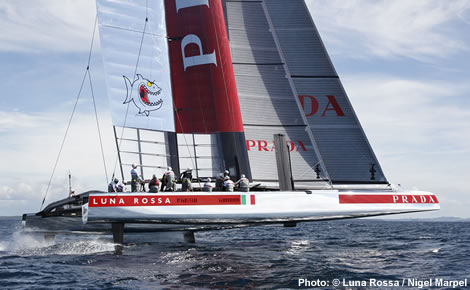
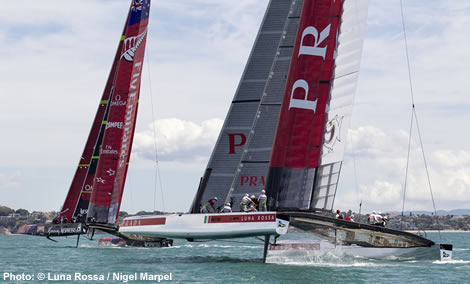
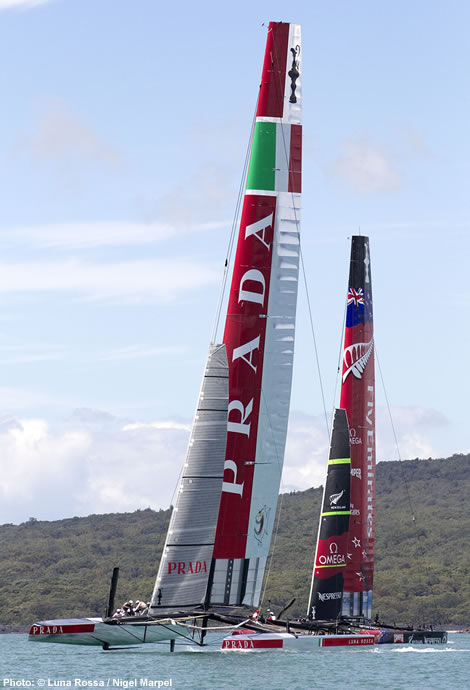
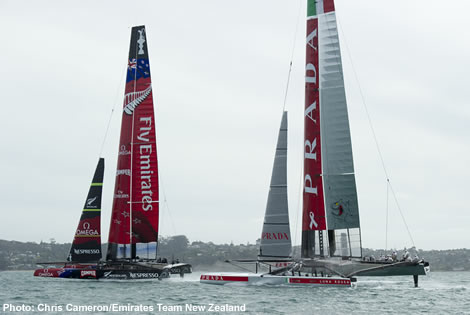
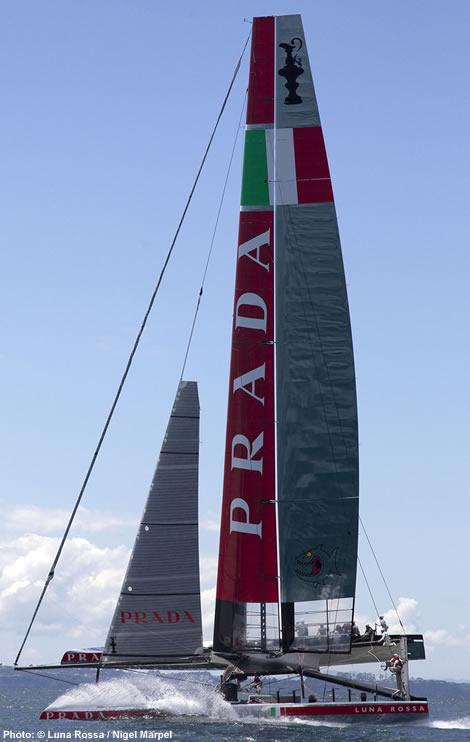







Latest Comments
Add a comment - Members log in